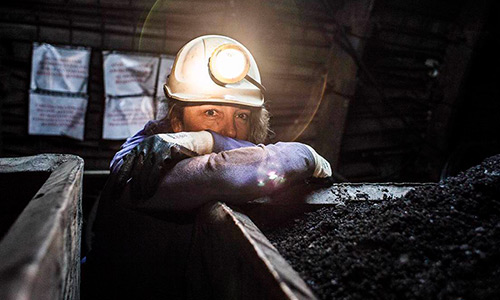While denizens of the world’s wealthiest economies debate the fate and fortune of the middle class, over 800 million people worldwide have no access to electricity. And more than two billion have no clean cooking facilities, forcing them to use toxic alternatives such as animal waste as their main cooking fuel. Furthermore, per capita carbon dioxide emissions in Europe and the United States are still vastly higher than in China and India. What right do Americans, in particular, have to complain as China increases production in smokestack industries to counter the economic slowdown caused by its trade war with the US? To many in Asia, the inward-looking debate in the West often seems both tone deaf and beside the point.
Even if Europe and the US deliberately stall their capitalist growth engines – as some of the more radical policy proposals might do if implemented – it would not be nearly enough to contain global warming if emerging economies stay on their current consumption growth trajectory.
The most recent United Nations data suggest that the world has already reached a tipping point where there is little chance of limiting the increase in global temperature to what climate scientists consider the safe threshold of 1.5°C above pre-industrial levels. In fact, a significantly larger rise is likely. According to a recent International Monetary Fund report, limiting global warming even to 2°C would require a global carbon price of at least $75-100 per ton of CO2 – more than double its current level – by 2030.
Any solution to the problem requires two interconnected parts. The first and more important is a global tax on CO2 emissions, which would discourage activities that exacerbate global warming and encourage innovation. Equating the price of CO2 emissions globally would eliminate distortions whereby, say, a US-based firm might choose to relocate its most carbon-intensive production to China. Moreover, a worldwide carbon tax would achieve in one fell swoop what myriad command-and-control measures cannot easily replicate.
The second critical component is a mechanism that impels emerging and less-developed economies to buy in to emissions reduction, which can be very costly in terms of foregone growth. In recent years, the biggest contributor to the global increase in CO2 emissions has been fast-growing Asia, where roughly one new coal plant is being built every week. For advanced economies, where the average coal plant is 45 years old, phasing out such facilities is low-hanging fruit in terms of reducing CO2 emissions. But in Asia, where the average age of coal plants is only 12 years, the cost of taxing plants into oblivion makes doing so virtually impossible without outside aid.
Yes, Europe and the US can impose carbon border taxes on developing countries that do not comply with their standards. But, beyond the associated technical challenges, this would raise issues of fairness, given profound global energy inequality. One promising idea, which I have suggested previously, would be to establish a World Carbon Bank that would specialize in energy-transition issues and provide technical and financial assistance to poor and middle-income countries.
In principle, either a carbon tax or a quota system, such as the one Europe has instituted, can work. But, as the late economist Martin Weitzman showed in pathbreaking work in the early 1970s, there are important subtleties depending on the nature of uncertainty. For example (and greatly oversimplifying), if scientists have a fairly precise idea of the amount of cumulative CO2 emissions that the planet can handle between now and 2100, and if economists are not so sure what price trajectory would induce countries and firms to adhere to those limits, then the case for (tradable) quotas is strong. Under other assumptions about the nature of cost and benefit uncertainties, a carbon tax is preferable.
One issue Weitzman did not consider is that carbon tax agreements are likely to be more transparent and easier to monitor than quotas; this is particularly important in international trade. There are good reasons why a succession of multi-country tariff-reduction agreements after World War II sought to strip away regulatory and quantity constraints, and replace them with relatively simple tariff schedules. In addition, carbon taxes could generate significant revenues to support green research, compensate low-income households within countries for transition costs (for example, by giving car owners incentives to trade in old “clunkers” and buy more fuel-efficient vehicles), and fund transfers from rich to poor countries through a mechanism like the World Carbon Bank. Quotas could, in principle, be auctioned to achieve the same goal; but they are often given away.
In practice, almost all of the 40 countries that have established national carbon prices have done so indirectly, via quotas. European policymakers are particularly enthusiastic about this approach, arguing that it is much more politically palatable than introducing a carbon tax. But it is not at all clear that the same is true for a global system, where transparency carries a premium. As the cost of distorting taxes and quotas increases, it makes sense to align across the most efficient possible system.
The scientific evidence increasingly indicates that the world may soon reach a point of no return regarding climate change. So, rather than worrying almost exclusively about economic and political inequality, rich-country citizens need to start thinking about how to deal with global energy inequality before it’s too late.
Home » Opinion » The Inequality Debate We Need
The Inequality Debate We Need
| Kenneth Rogoff

